OK, we have made a slight design change to a push out on the master bedroom, it was to be 2′ and cantilevered, but we decided to change it to 4′ The side where it goes is to have a covered deck so I will be building the push out on joists running out to the deck support beam. I need to figure out how big a beam I will need.
The deck is 8′ deep, span between posts is 16′. I’m using PT Spruce. The pushout is a full 16′ wide and will be framed with 2×6, and have a low slope (12:3) roof, the roof itself will be supported by a beam at the end of the deck so all that load will be transfered directly to the support posts.
My figuring is that I need a supported length of 4′ on a span of 16′, my tables only go down to supported 8′ at which I could use either a 10″ x 5 layer or 12″x 4 layer built up beam. I’d rather use 10″ as getting PT 12″ is a pain.
Any one have a table that can give me the size for a 4′ supported length?
Oh, and I’m in Alberta Canada
Robert
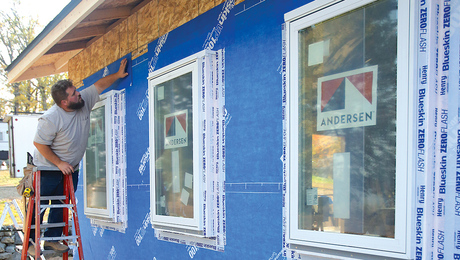

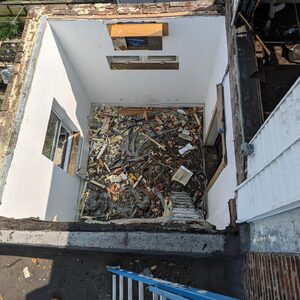
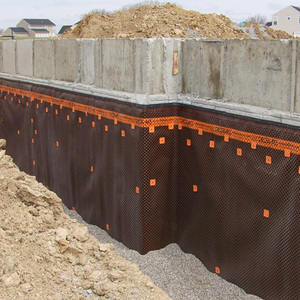
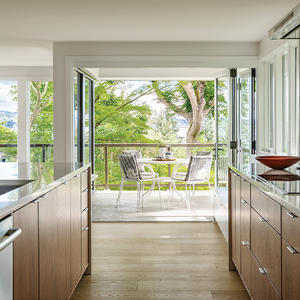
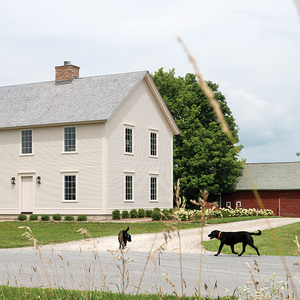













Replies
Don't be surprised if no one touches this.
Check w/ your engineer.
WAHD
Loaded 4 ft cantilevers are usually a NO-NO!
This would be a lot clearer if you could post a drawing/photo of the plans and crosssection concerning your question. I hope you can!
.......................Iron Helix
Don't you guys have architects, engineers, or building inspectors up there? lol
A 4' unsupported cantilever is a definite no-no without special engineering- that's why it's not showing up properly in the span tables. To top it off, you're pretty wide on the post span at 16'. Time to talk to an engineer there, guy.
Bob
SURPRISE!!!!!!
WAHDView Image
Sorry I thought I was clearer, it isn't a cantiliver anymore, see attached picture. And I can talk to an engineer, but I'll have to wait at least a week until he gets back from holidays, and this isn't that complicated. I could just use the beam size for an 8' span, but that would just be a waste of wood.
And yes, I was expecting a bit of this reaction, but I thought if I gave enough information someone with a more detailed set of tables, or a span calculator could give me an answer.
Robert
I'm with WAHD
It is indeed more complicated than you imagine and there are bits of information missing, how much can only be determined by a site visit.
And this is one of those thoings where getting something for free is worth exactly what you pay for it..
Excellence is its own reward!
single floor above with roof.. assuming 40/sf.. the load is (16x4)/2 x 40LB
go to your beam table and look that up for a span of 16'Mike Smith Rhode Island : Design / Build / Repair / Restore
>>go to your beam table and look that up for a span of 16'<<
I did exactly that, the problem I have is that to determine the beam size I need the supported length, since that is half of the joist length, or 4' in this case and my tables start at 8' I can't get the actual size I need, but rather a beam for twice the supported length. Which gives me either a 5 ply 2x10 or a 4 ply 2x12. I could just use that but it's overkill and I hate to waste wood.
Robert
Looks to me like you've got some roof load on that thing too.
I wouldn't call out a beam for it without seeing it first.Forty-two percent of all statistics are made up on the spot.
when i reread your post .. it seems you are supporting a floor that is built on 8' joists bearing on a beam that spans 16'....
your terminology is different than i'm used to..... the floor load is , let's say, 40lb/sf
the roof load is whatever you use for snow load /sf
1/2 the floor load and 1/2 the roof load are going to be uniformly distributed on your beam... i don't think you are reading your tables the way they are meant to be read...figure your floor load .. plus your roof load, and divide by 2, because half will bear on the old wall, and half will bear on the beam you are trying to size..
you usually enter with the span of the beam... which is going to be between 15' & 16'... and you have to calculate W, the total weight of the uniformly distributed load..
you have to know the species of the wood you will use so you can determine the (Fsub B: bending stress ) and the modulus of Elasticity"E"..
you get your design loads from your building code...
(16' x 8' ) = 128 sf, our design snow load is 30 PSF... let's assume yours is 100..
assume your floor load is 40 psf.. your combined load is going to be 140 psf..
128sf x 140 psf = 17920 lb. but half that is bearing on the wall , and half on the beam ( which is a very large span for a beam ).. 17920/2 = 8960 lb.
are your tables in lb. or kilos ? let's assume you will use 2x12, of a common framing species.. #2 or better... so you can asume an FsubB of 1000 and a mod. of Elasticity of 1.2
i go to my 16' span table..... looking for a 12" beam... the 8x12 is under..
and the 10x12 is over... so i'd spec a 10x12, which i can use (5) 2x12's..
BUT you have to determine all of these assumptions from your local code adn the species you will be using...
with my usual disclaimer..
but hey, whadda i no ?
Mike Smith Rhode Island : Design / Build / Repair / Restore
Thanks Mike for the explanation. I guess I'll have my guy come and look at it when he gets back. One difference in my situation from your explantion is that the the roof joists run to the end posts as well so there won't be any roof load on the mid point of the joists, just the floor load.
I'll let someone else figure it out and then I'll just build it the way they say.
Robert
that's cool.. be interesting to hear what he spec's..
alberta.... what is your snow load , anyway ?Mike Smith Rhode Island : Design / Build / Repair / Restore
OK, I'm trying to interpret the drawing....
It looks like you want to size a beam 16 ft long that supports the outer ends of some 8 ft joists. The joists appear to have a point load down the middle from an exterior wall, and different distributed loads for the inside and outside half.
If I got that right, then the joists require some calculation. That's a sufficiently complicated situation that there certainly aren't ready made tables for it. The numbers from the joist work are the input you'd need to calculate -- or look up -- the 16 ft. beam.
Because of gravity, we have to build from the bottom up. And for the same reason, we have to engineer from the top down. Before you can design something to hold the structure above it up, you have to design the structure above it so you know how much it all weighs.
-- J.S.